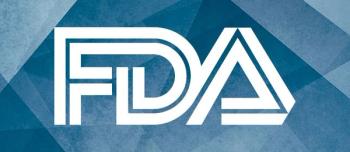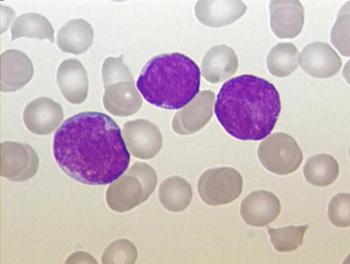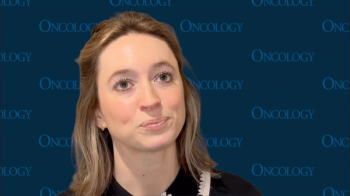
- ONCOLOGY Vol 17 No 10
- Volume 17
- Issue 10
Commentary (Enke)-Management of Mycosis Fungoides: Part 2. Treatment
Together, parts 1 and 2 of thearticle by Drs. Wilson andSmith on the “Management ofMycosis Fungoides” serve as an excellentreference for the diagnosis andmanagement of this subtype of cutaneousT-cell lymphoma. Part 1, whichdeals with the diagnosis, staging, andprognosis of mycosis fungoides, appearedin the September 2003 issue ofthis journal. Part 2, which deals withtreatment, appears in the current issue.The article is a concise overviewof the numerous treatment strategiesand specific treatments available forvarious stages and presentations ofmycosis fungoides.
Together, parts 1 and 2 of the article by Drs. Wilson and Smith on the "Management of Mycosis Fungoides" serve as an excellent reference for the diagnosis and management of this subtype of cutaneous T-cell lymphoma. Part 1, which deals with the diagnosis, staging, and prognosis of mycosis fungoides, appeared in the September 2003 issue of this journal. Part 2, which deals with treatment, appears in the current issue. The article is a concise overview of the numerous treatment strategies and specific treatments available for various stages and presentations of mycosis fungoides.
Diagnosis Strategies
In part 1, the authors point out that the diagnosis of mycosis fungoides must be based on a summation of diagnostic data including clinical history, presentation, histopathologic findings, and immunophenotypic and gene-receptor-rearrangement studies. The differential diagnosis for the disease includes several benign and malignant dermatologic conditions. It is no longer advisable to make a diagnosis without obtaining supporting immunophenotypic and gene-receptor- rearrangement data. At times, additional biopsies may be required to obtain the necessary supporting data. Nonetheless, there are still occasions when the immunophenotyping and gene-receptor-rearrangement studies are inconclusive (even with additional biopsies), and the clinical and histopathologic information is still ultimately used to make the diagnosis. In patients with a confirmed diagnosis, several clinical scenarios may call for additional diagnostic biopsy information. Apparent widespread clinical progression on therapy is a common occurrence, but it may be indicative of a transformation to a more aggressive lymphoma. Unusual localized dermatologic findings in patients with otherwise stable disease should be investigated before assuming disease progression. Benign, but clinically suspicious, dermatologic conditions occasionally appear following treatment with psoralen plus ultraviolet A (PUVA), total-skin electron- beam radiotherapy (TSEBT), topical steroids, and certain topical chemotherapy preparations.
Treatment Overview
Part 2 describes several new treatment strategies, including stage-specific options. Current guidelines for management are presented and should assist physicians who infrequently treat patients with mycosis fungoides. Although dermatologists, medical oncologists, or radiation oncologists manage most patients, the varied treatment options require familiarity with all the major treatment categories. The patient is best served when all treatment options are considered. Multidisciplinary mycosis fungoides clinics offer patients access to all major treatment modalities. If such access is not available and the disease progresses with standard therapies, the clinician should be willing to refer patients for alternative treatments. Topical therapies may appear ineffective due to technical problems such as inadequate skin contact. Some ointment- based topical therapies are absorbed by clothing before they can be absorbed by the skin. An occlusive dressing may assist the absorption of topical therapies applied to localized areas of disease. A careful history is also important when assessing response to topical therapies. Often, topical therapies appear ineffective because the frequency with which they are applied is less than what was prescribed. Occasionally, increasing the frequency of application may result in significant improvement in response.
Total-Skin Electron-Beam Radiotherapy
The authors discuss TSEBT and the indications for its use in some detail. They also describe technical guidelines for the delivery of TSEBT developed by the Cutaneous Lymphoma Project Group of the European Organization for Research and Treatment of Cancer. Our institution has used a rotational technique for many years instead of the more common six-field approach.[1] Patients stand on a slowly rotating turntable with arms overhead. Wrist straps provide additional support. An upper and lower electron field is achieved with gantry angulation, providing total skin coverage with each session. Both fields are treated 2 or 3 days per week, depending on clinical factors. This schedule is helpful because many of our patients commute over considerable distances to receive treatment. The dosimetry is relatively straightforward. Like the six-field technique, supplemental boosting is required for the scalp, perineum, and soles. Boost fields are also considered following the same guideline mentioned by the authors. Involved-field irradiation has a role as an adjunct to other therapies. The technique can be used for more advanced plaques or tumors in patients treated with PUVA. In addition, it should be considered for lesions refractory to other treatments that have otherwise been successful. This may extend the clinical usefulness of otherwise effective therapies.
Oral Medications
Oral bexarotene (Targretin) has been effective in our experience. Hy- pertriglyceridemia is the most common adverse event, as mentioned by Drs. Wilson and Smith. Statin medications are helpful, although patients treated with bexarotene may require higher dosages than are normally prescribed. Currently, Medicare does not cover the cost of oral bexarotene therapy, and this can be an important issue for some patients. Patients may qualify for compassionate use programs to cover some of the cost of this therapy. Denileukin diftitox (Ontak) is another effective option for refractory mycosis fungoides. Adverse reactions to this agent include a vascular leak syndrome, which may be more common in patients who have already been treated with TSEBT. Some investigators have used oral bexarotene for 1 to 2 weeks prior to the administration of denileukin difitox. The hypothesis is that oral bexarotene results in upregulation of the high-affinity interleukin- 2 receptor.
Conclusions
Drs. Wilson and Smith should be commended for their concise and contemporary discussion on the diagnosis and management of mycosis fungoides. Considerable controversy remains over the optimal approach to management of this disease, ranging from minimal treatment to stem cell or bone marrow transplant. The information contained in these articles provides an excellent reference for symptomatic patients who require treatment.
Financial Disclosure:The author has no significant financial interest or other relationship with the manufacturers of any products or providers of any service mentioned in this article.
References:
References1. Kumar PP, Good PP, Jones EO, et al:Dual-field rotational (DFR) technique for total-skin electron beam therapy (TSEBT). Am JClin Oncol 10:344-354, 1987.
Articles in this issue
about 22 years ago
Breast Cancer in Menabout 22 years ago
Emerging Technology in Cancer Treatment: Radiotherapy Modalitiesabout 22 years ago
Emerging Technology in Cancer Treatment: Radiotherapy Modalitiesabout 22 years ago
The New Generation of Targeted Therapies for Breast Cancerabout 22 years ago
Breast Cancer in Menabout 22 years ago
The New Generation of Targeted Therapies for Breast Cancerabout 22 years ago
Emerging Technology in Cancer Treatment: Radiotherapy ModalitiesNewsletter
Stay up to date on recent advances in the multidisciplinary approach to cancer.

















































































